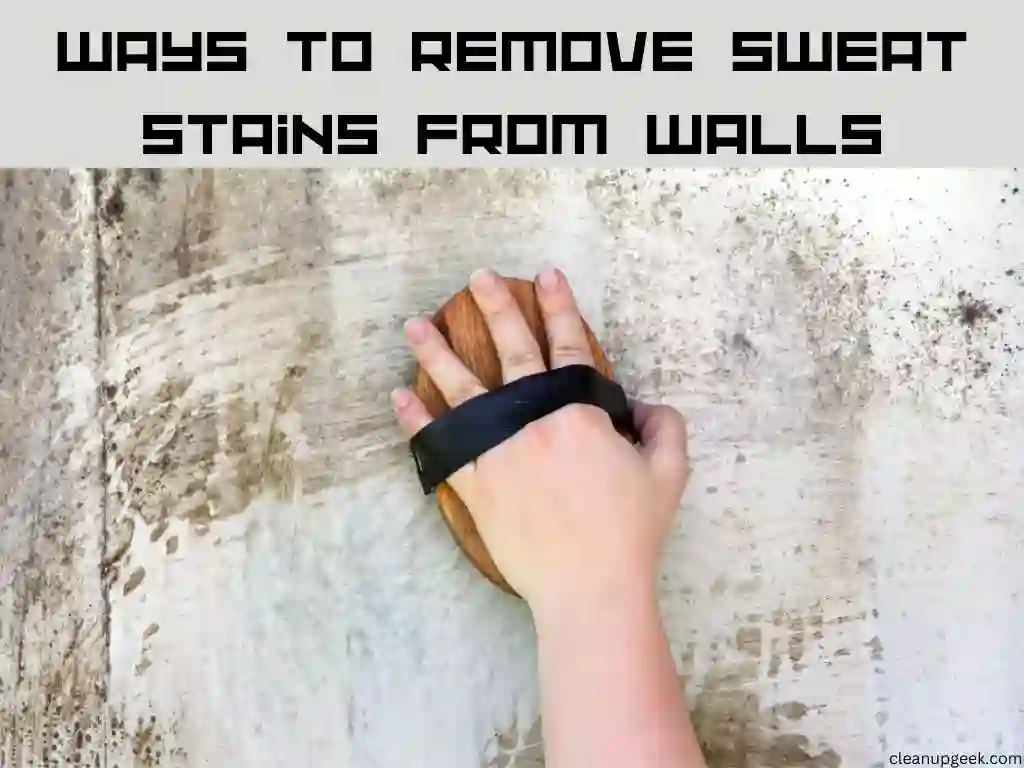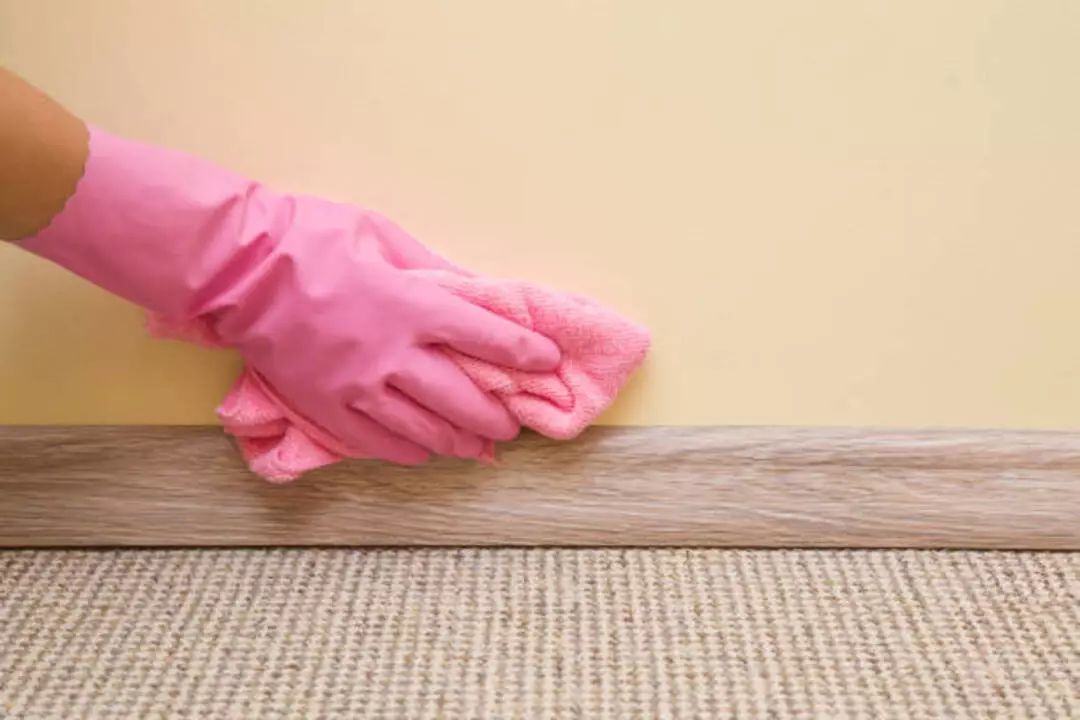What are the best tips to remove stains from plastics? Plastic is a material that is durable, lightweight, and flexible. It is made from synthetic or semi-synthetic materials. It is used in a variety of products, including food packaging, toys, and medical devices.
Plastic is durable and easy to produce, which makes it a popular choice for manufacturers. While plastic has so many uses, it can also be attracted to stains.
Stains on plastic can be difficult to remove and often require special stain removers. There are a few different methods you can use to clean your stained plastic and get it looking like new again. With a little elbow grease and the right cleaner, those stains will be gone in no time. Whichever method you choose, be sure to test it out on a small area of the plastic first to make sure it won’t damage the material.
In this article, we will discuss the tips for removing stains from plastic and the best ways to care for your plastics to make them last longer.
The Best Cleaner for Removing Stains from Plastic

In today’s world, plastic is everywhere. It’s in our water bottles, our food containers, and our children’s toys. Over time, it can become stained and grimy. But, with the right cleaner, those stains can be removed quickly and easily.
If you’re looking to clean your plastic belongings, be careful what kind of cleaner you use. Many household cleaners can damage plastics. For example, bleach can cause plastics to yellow and become brittle. Ammonia can also damage plastics. If you must use a cleaning product on plastic, make sure to read the label carefully and test it on a small, hidden area first.
Furthermore, avoid using razors, sandpaper, or any sharp objects to remove stains from plastic. Razors, sandpaper, and any other sharp objects will scratch the plastic surface and make the stain worse. Not to mention, it’s just really easy to accidentally cut yourself when using these tools. Instead, stick to using mild soap and water or a specific plastic cleaner.
However, dish soap, white vinegar, and baking soda are the best cleaners to use on plastics to remove stains. Dish soap is a powerful degreaser and can easily remove any build-up on your plastic surfaces. Baking soda is a natural abrasive that will gently scrub away any dirt or grime.
White vinegar is a natural disinfectant and will kill any bacteria or germs that may be present. Moreover, they are gentle enough that they won’t damage the plastic, but tough enough to get rid of those tough stains.
Therefore, the best cleaner for plastic is dish soap, baking soda, and white vinegar. Dish soap, baking soda, and white vinegar are all gentle yet powerful cleaners that can handle anything from grime to stains. Plus, they’re all inexpensive and easy to find. So the next time you need to clean plastic, reach for these trusted household staples.
Which is Better: Washing Plastic in the Dishwasher or by Hand?

When it comes to cleaning plastic containers, many people think that simply putting them in the dishwasher is enough. However, washing your plastic containers by hand is actually much more important. Here are four reasons why:
(1) Handwashing ensures that your containers are getting a thorough clean. Dishwashers can often miss spots, especially on the inside of containers, leaving behind bacteria and other contaminants.
(2) Handwashing ensures that all soap is rinsed off of your containers. Dishwashers can sometimes leave residue behind on plastic containers, which can lead to a buildup that makes it difficult for food and drinks to come out easily.
(3) Handwashing allows you to keep an eye out for cracks or other damage that could be caused by the dishwasher. Handwashing is also a good time to check that all of your containers are still in working order, ensuring that all of them will last as long as possible.
(4) Dishwashers sometimes heat up to very high temperatures, and this can cause plastic containers to become brittle or shrink. This can lead to cracks that make it easier for contaminants to get into your food.
(5) Dishwashers aren’t good at sanitizing containers, and they can actually transfer bacteria from one container to another. This can make it easier for foodborne illnesses to spread.
(6) Dishwasher soap can leave a residue on the food containers, which may make foods taste funny in the future.
Therefore, these are some important reasons why you should wash your plastic containers by hand instead of relying on the dishwasher.
Mistakes to Avoid When Cleaning Plastic

Plastic is one of the most versatile and commonly used materials in the world. Though it is durable, it can be tricky to clean and easy to damage. When it comes to cleaning plastic, there are a few things you should avoid doing if you want to keep your plastic looking new. Here are eight mistakes to avoid when cleaning plastic:
1. Don’t use harsh chemicals or abrasive cleaners on your plastic.
If you want to clean your plastic without damaging it, avoid using harsh chemicals or abrasive cleaners. Instead, opt for a mild soap and warm water solution. Gently wipe away any dirt or debris, and then rinse the area with clean water. Allow the plastic to air dry completely before using it again.
2. Avoid using hot water when cleaning plastic.
This is because hot water can cause plastic to warp or melt, so it’s best to avoid using it when cleaning plastic items. Instead, stick to using warm water and mild soap to clean your plastic items. This will help keep them in good shape for longer.
3. Don’t use bleach to clean your plastic items.
Most people think that bleach is the best way to clean plastics, but this is actually not the case. Bleach can damage plastic and make it more difficult to clean in the future. Instead, use a mild soap and water solution to clean your plastic items.
4. Never use abrasive cleaners or scrubbers on plastic.
Abrasive cleaners and scrubbers can damage plastic surfaces, making them more susceptible to scratches and other wear. Instead, use a soft cloth or sponge with mild soap and water to clean plastic surfaces.
5. Avoid using sharp objects to clean your plastics.
To avoid damaging your plastics, avoid using sharp objects to clean them. Instead, use a soft cloth or sponge and mild soap and water. If necessary, you can also use a non-abrasive cleaners like vinegar, baking soda, dish soap, and many more.
6. Do not use alcohol-based cleaners on plastic.
Do not use alcohol-based cleaners on plastic as they can cause the plastic to warp or become brittle. Use mild soap and water instead.
7. Avoid cleaning your plastic with ammonia.
Ammonia can cause the plastic to break down and become brittle. It can also cause the plastic to release toxins that can be harmful to you and your family.
8. Do not use cleaners that contain petroleum solvents.
These can be harmful to your health and the environment. Look for natural, non-toxic cleaners instead.
How to Clean Stains From Plastic

If you’ve ever had a plastic item with a stain on it, you know how difficult it can be to clean. Stains on plastic can be caused by a variety of things, including food, dirt, and ink. There are a few different ways that you can clean stains from plastic. One way is to use dish soap and water. Another way is to use a vinegar and water solution. You can also try using baking soda.
Dish soap is a powerful degreaser and will easily remove any build-up on your plastic surfaces. Baking soda is a natural abrasive that will gently scrub away any dirt or grime. White vinegar is a natural disinfectant and will sanitize any bacteria or germs that might be present.
In order to maintain a healthy lifestyle, it is important to wash your plastic containers by hand. By doing so, you are preventing the growth of bacteria and mold that can cause illness. Additionally, hand-washing your plastic containers helps to prolong their lifespan. Not to mention, it is also more environmentally-friendly than using the dishwasher. Here’s how to hand wash plastic:
Items needed:
1) Dish soap, baking soda, and white vinegar.
2) A sink
3) A soft sponge
4) Lint-free clean cloth or paper towel
5) Warm water
6) Tablespoon
The step-by-step guide:

1. Fill your sink with warm water. Make sure it is half filled with water.
2. Add three tablespoons of baking soda to the water. Stir until it dissolves.
3. Add your plastic container to the baking soda solution.
4. Allow the plastic to soak for 5 minutes.
5. Apply a small amount of dish soap to a soft sponge.
6. Gently scrub the plastic container with the sponge. Make sure to scrub all parts of the container, including the corners.
7. After washing, drain the water and refill the sink with warm water.
8. Add 2 tablespoons of white vinegar to the water.
9. Rinse the plastic thoroughly in the vinegar solution.
10. Use a paper towel or a lint-free cloth to wipe and dry the plastic.
Final Thoughts
There are a few things to keep in mind when cleaning stains from plastic. First, always use a mild detergent and avoid using harsh chemicals. Second, be sure to rinse the area thoroughly after cleaning to remove any residue.
Finally, if the stain is particularly stubborn, you may need to use a soft brush to remove it. Repeat the above steps as necessary until the stain is removed.










